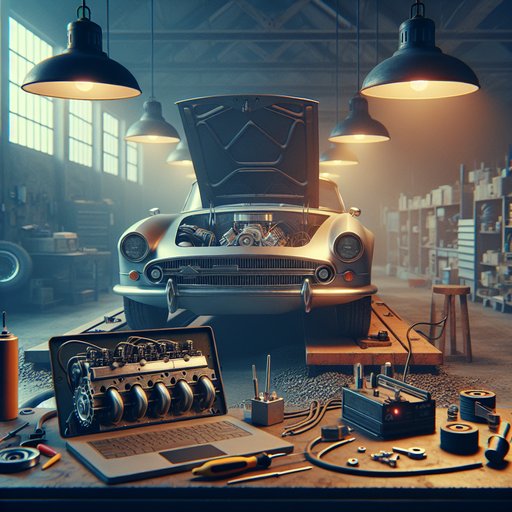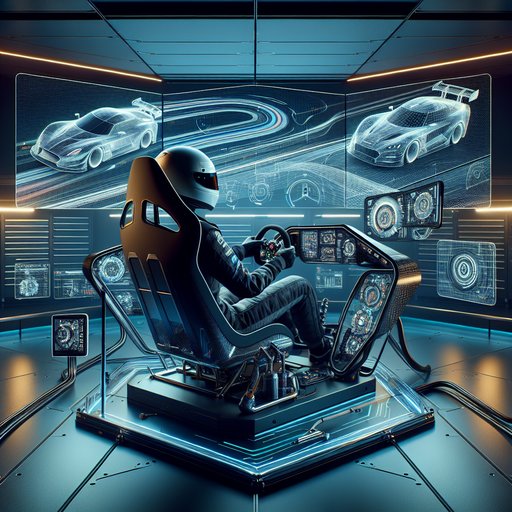
I used to tune idle by ear. You could hear a misfire in a V8 the way a watchmaker hears a tick out of step, feel a worn cam through the screwdriver pressed to the valve cover. Now half my diagnoses start with a laptop and end in a quiet test drive where the loudest sound is gravel in the wheel well. People ask me if I miss the smell of fuel. I do. But I’ve also learned the smell of hot dielectric grease, of coolant after a fast charge, and the click of a contactor that tells me a high-voltage pack just woke up. The road shifted under our feet, and I stayed on it, slow at first, then with both hands on the wheel.
The first car that rolled into my life here was a straight-six with a sticking choke. That was decades ago, when I could set dwell with a matchbook and keep a city fleet running on nothing more than points, plugs, and a box of cork gaskets. We tuned by ear and by smell and by how your shirt sleeves looked at the end of the day. You’d blip the throttle and feel the whole bench vibrate.
Work was mechanical in the old sense: metal on metal, tolerances cut with steel, a rhythm of clatter that let you know where you were in the world. Later the check-engine light arrived like a polite Christmas ornament that never looked urgent enough to be expensive, and then it was. I bought my first scanner reluctantly, learned OBD‑II and the way manufacturers preferred to hide meaning in codes that all sounded like strangers: P0302, P0420. The cars grew wires like vines.
I remember when the first CAN bus diagram crossed my bench and I stared at it the way I stared at my first wiring diagram years earlier, feeling old for a minute until the relief came: you still needed hands, patience, and a reasonable fear of making things worse. Hybrids were the first time I wore gloves not just for oil but for the voltage. A taxi company brought in early compact hybrids by the dozen, yellow paint under black tire dust, and I learned that regenerative braking meant pads that lasted forever but rotors that rusted in rings. We locked out high-voltage systems with tags and orange cones and practiced with a megohm meter like it was holy.
The cars taught me new noises: the soft whir of an electric water pump at shutdown, the thrum of an inverter under load, the momentary shudder when an engine joined the party at a light. I stopped calling it a “starter” and started calling it “the motor” because it did both. The diesels had their moment, and we chased it into a corner. Common-rail injection made them quick and quiet, and then emissions systems made them complicated and brittle.
We learned to bleed urea tanks like nurses. We monitored diesel particulate filters and told customers why short trips killed long lives. Then the scandal broke and the conversations changed in the waiting room; some customers handed in keys, some asked if we could “fix” clean air back into performance, and we said no, and watched a type of work go away. After that, when a battery pack the size of a double mattress showed up at the freight door, I didn’t think rebellion—I thought, here’s the new puzzle.
The first pure electric that rolled into the bay had a small pack, a simple face, and heater performance that made winters honest. A worn set of tires, a cabin filter full of city, and brake pads with the glaze still on the edges after years of stop-and-go—that’s what service looks like on a motor that stops itself most of the way. It wasn’t glamorous. It was quiet.
The contactors clicked, the dash came alive, and we rolled off the lift with a hum underfoot that didn’t match any memory. Range dropped like a rock on cold days, rose with the sun in spring. From the logbook: talk to owner about preheating, check pack temp, look for missing undertrays. We started keeping orange barricade tape by the door like it had always been part of the shop.
Then the long-range cars arrived and rewrote the test drive. There’s a kind of acceleration you don’t describe, you hear it in passengers going silent. Software updates arrived through the air while the owner slept, and I found myself explaining release notes like a service bulletin that never stopped updating. I learned coolant loops that ran through packs and motors and inverters like capillaries, purged air with a laptop commanding valves I couldn’t touch.
We bought insulated tools in sizes I already had, learned to read pack controllers, and taught ourselves to stop calling a transmission by that name when it was a reduction gearbox doing its job without complaint. The track changed too. On television I watched the day the sound of the big series shifted in 2014; people argued about what the word “race” should sound like while engineers pointed to lap times and recovery systems. Endurance prototypes harvested energy and dumped it back out of corners like magic, and you could see it in split times even if your ears missed the tenor.
A purpose-built electric car ran up a mountain faster than anything had before in 2018, and at the hill climb I heard the future in tire squeal and gear whine more than exhaust. I stood at a club track one weekend and watched a heavy sedan run laps too quick for its weight, fade as heat saturated, then return after a charge with the same punch you can’t tune into a carburetor. The questions changed at the counter. It wasn’t spark plugs and timing belts—it was “Do I need CCS or CHAdeMO?” and “Can I tow with it?” and “How long to 80%?” We put a Level 2 charger on the side of the shop and watched it become a small community.
Someone asked about 800‑volt systems and I talked about quicker charging and cooler cables, about cars that used silicon carbide to waste less as heat. I explained why one car’s pack chemistry handled cold better and another lasted longer in heat. On the news the dates flew by—targets for phasing out new combustion sales, somewhere a mention of exceptions for synthetic fuels, politics and polemics—but in the bay the work stayed specific. A coolant leak doesn’t care about a bill in parliament.
A module resets or it doesn’t. Somewhere far away battery plants opened where engine plants once stood, and I started seeing Chinese names on parts crates alongside the familiar, a reminder that the supply chain changed hands while we were busy arguing about destination charges. The craft didn’t vanish; it moved. I still listen, just for different things: a tired bearing sings the same song in any car.
Torque still stretches a thread if you ignore it. High-voltage or not, a dirty ground will waste your afternoon. I show apprentices how to lock out a system and how to be patient in a way that protects their fingers. I teach them to trust their eyes on tire wear—heavy packs and instant torque can chew shoulders if you ignore alignment.
We talk about half shafts, about cooling plates under cells, about why brake fluid still matters even if you hardly use the pads. I still keep a stethoscope in the top drawer, and now I keep a thermal camera alongside it because heat tells the truth faster than words. Some Sundays I start an old straight-six that lives under a dusty cover, just long enough to warm the oil and keep the seals honest. The idle lope shakes the coffee in its cup, and I stand there sidelong, equal parts memory and maintenance.
Then Monday comes and I slip on insulating gloves, open a service disconnect with a steady hand, and I’m back in a world where the loudest thing is the compressor kicking on. I don’t feel betrayed by any of it. Machines change, roads change, and if we’re lucky the work remains: bolts to torque, systems to understand, people trusting you to keep them moving. The apprentices ask me what the future sounds like.
I tell them to roll the window down, listen to the tires, and make up their own minds.






































